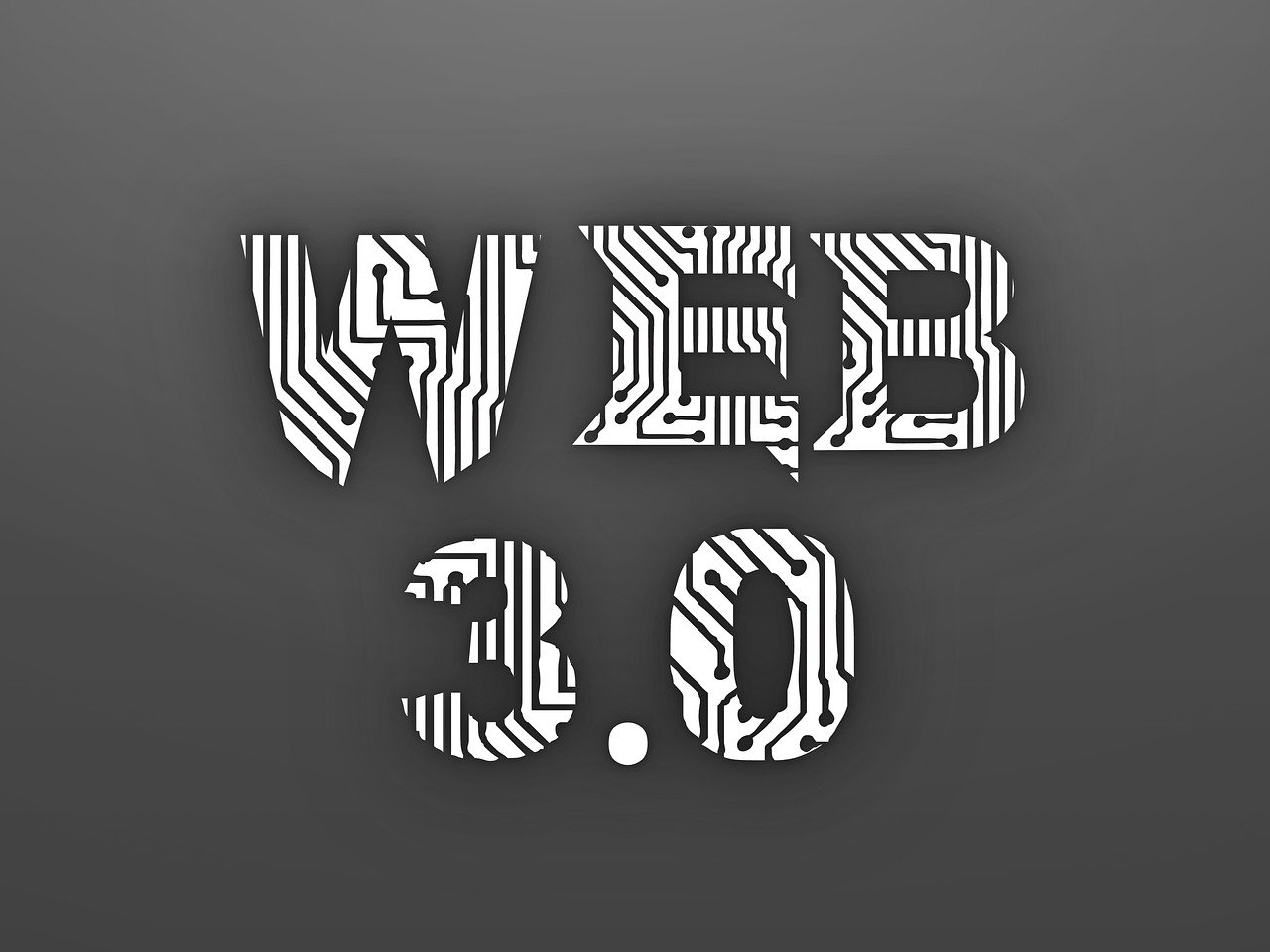Gaming’s next evolution is here and it’s changing the rules. Web3 gaming blends blockchain technology with the world of video games, creating a space where players aren’t just participants—they’re true owners. Instead of relying on a central authority, Web3 games run on decentralized networks, giving players control over their in-game assets and how they interact with others.
With smart contracts and non-fungible tokens (NFTs), players can securely own, trade, and even monetize digital items. This new approach is making games more transparent and player-centric, shifting power away from traditional gaming companies. As projects continue to push boundaries, Web3 gaming is quickly becoming a game-changer for how people play, connect, and create value in virtual worlds.
What Is Web3 Gaming?

Web3 gaming defines a gaming model where blockchain technology, smart contracts, and non-fungible tokens (NFTs) create a decentralized ecosystem. Players interact with systems managed on blockchain networks, removing the traditional central authority that controls data and asset ownership. Blockchain ledgers store in-game transactions and assets, allowing transparent verification of ownership and item history.
Smart contracts govern gameplay rules and asset exchanges through self-executing code, increasing fairness and reducing manipulation. NFTs represent unique digital items—examples include weapons, characters, or skins—which players own permanently and can trade in decentralized marketplaces. Digital wallets hold these NFTs and tokens, enabling full user control and cross-title interoperability in some cases.
Web3 gaming prioritizes transparent systems and empowers communities through Decentralized Autonomous Organizations (DAOs). DAOs let players jointly participate in governance decisions—examples include voting on game updates or economic proposals. Play-to-earn models let participants earn cryptocurrencies or digital assets as rewards for their activities, evidenced by numerous blockchain games launched since 2020.
Web3 gaming shifts power to players, making ownership provable, economies player-driven, and participation financially rewarding. This new model challenges established gaming hierarchies by embedding decentralization, transparency, and monetization at the core of game design.
Key Features of Web3 Gaming
Video overview:
Web3 gaming introduces a new standard in the gaming industry by focusing on digital asset ownership, seamless cross-platform engagement, and transparent processes. These features distinguish Web3 games from traditional game models.
Player Ownership and Digital Assets
Web3 gaming grants players verified ownership of in-game assets through blockchain-based NFTs. Assets—such as rare weapons, unique skins, and collectible characters—are minted as non-fungible tokens, enabling each item to be permanently associated with a player’s digital wallet. Unlike in traditional games where assets exist only on company servers and can be restricted, NFTs allow players to sell, trade, or transfer their items on decentralized marketplaces, regardless of individual game actions. For example, one study found that 100% of NFT assets remain accessible even if a Web3 game platform stops operating.
Interoperability and Decentralization
Web3 games enable asset and token transferability across multiple titles or platforms using blockchain standards like ERC-721 and ERC-1155. As a result, players can integrate assets from one game into another or utilize tokens across several virtual worlds, supporting the creation of multi-game ecosystems. In addition, governance often relies on Decentralized Autonomous Organizations (DAOs), where token holders vote on proposals, determining changes in game design or economics. This method reduces the dependence on centralized publishers and lets communities directly shape gaming experiences.
Transparency and Security
Web3 gaming ensures transaction and asset transparency through decentralized blockchain ledgers. All in-game asset transactions and smart contract executions are immutably recorded, letting players verify item origins, trade histories, and gameplay records at any time. The use of smart contracts streamlines game logic, reward distribution, and ownership transfers, preventing manipulation or fraud common in traditional gaming. While blockchain security protects assets from unauthorized changes, technical vulnerabilities and external attacks remain risks that developers address with ongoing security enhancements.
| Feature | Description | Technology Used |
|---|---|---|
| Player Ownership | Permanent, verifiable control of in-game NFTs and assets | NFTs, Digital Wallet |
| Interoperability | Cross-game and cross-platform use of assets | ERC-721, ERC-1155 |
| Decentralization | Community-driven governance via token-based voting | DAOs |
| Transparency | Public, immutable records of every transaction and gameplay event | Blockchain Ledger |
| Security | Cryptographically secure asset management and transaction automation | Smart Contracts |
How Web3 Gaming Works

Web3 gaming uses blockchain technology to create decentralized, transparent environments where players control their digital assets. Game interactions and asset management rely on secure, automated processes that replace intermediaries with self-executing systems.
Core Technologies Behind Web3 Games
Web3 games operate on distributed blockchain networks that record every game-related transaction and interaction. Blockchain ledgers make data immutable and auditable, supporting trust across the player base.
Smart contracts automate asset trades and enforce game logic without manual intervention. These codes reside on the blockchain, executing automatically when set conditions are met, minimizing disputes or manipulation.
NFTs represent unique in-game items, such as avatars or lands. Players store and manage these digital objects in personal wallets, enabling asset transfer, sale, or use across supported games and platforms.
Decentralized Autonomous Organizations (DAOs) allow stakeholder governance over game direction. Players holding governance tokens can propose, debate, or vote on game changes, ensuring that no centralized entity dictates evolution.
In-Game Economies and NFTs
Web3 gaming economies use tokenized assets, allowing players to buy, trade, or stake tokens for rewards. These tokens act as both currency and investment within ecosystems.
NFTs provide proof of ownership and enable true digital scarcity. Players can exchange or liquidate assets in decentralized marketplaces, extracting real-world value from digital achievements.
Play-to-earn mechanisms distribute cryptocurrencies or NFTs as gameplay incentives, rewarding activities like level progression, quest completion, or competition victories.
Interoperability features sometimes permit use of NFTs or tokens in multiple games built on compatible platforms, expanding utility and liquidity for earned or purchased assets.
| Technology | Role in Web3 Gaming |
|---|---|
| Blockchain | Records all transactions securely and transparently |
| Smart Contracts | Automate trades, enforce game rules, and facilitate trustless interactions |
| NFTs | Represent unique digital assets, ensuring verifiable ownership and tradeability |
| DAOs | Enable decentralized, community-driven game governance |
| Tokenized Economies | Use cryptocurrencies and NFTs for buying, selling, staking, and in-game transactions |
Types of Web3 Games
Web3 games take multiple forms, each leveraging decentralized technology to unlock new economic and interaction models. Types include play-to-earn systems, persistent virtual worlds, and interoperable collectibles.
Play-to-Earn and Blockchain-Based Models
Play-to-earn and blockchain-based models reward players with cryptocurrencies or NFT assets for in-game achievements, battles, or contributions. In these games, blockchain ledgers record all in-game assets and transactions, ensuring security and transparency. Examples include battle games where users earn digital tokens for victories, trading card games issuing NFTs for rare pulls, and farming simulators distributing cryptocurrency for completed objectives. Smart contracts automate rewards and asset transfers, reducing fraud and increasing trust. Players maintain control of earned assets through blockchain wallets, enabling transfer and sale outside the original title. Play-to-earn mechanics create user-driven economies by shifting value generation from game developers to the community.
Virtual Worlds and Collectibles
Virtual worlds and collectibles within Web3 gaming center around persistent online environments and scarce digital items. Players buy, sell, develop, and trade parcels of virtual real estate, avatars, or items, all tokenized as NFTs. These items—such as buildings, vehicles, and skins—gain true rarity and value thanks to their unique blockchain identifiers. Users often monetize virtual resources by creating social spaces, hosting events, or renting virtual land. Community governance via DAOs can influence development, feature integration, and event planning. Collectible games expand utility through cross-platform compatibility, allowing rare NFTs like characters or artifacts to transfer between different games. These collectible economies fuel robust secondary markets that extend asset value beyond their origin platform.
| Type | Core Mechanism | Example Activities | Player Benefits |
|---|---|---|---|
| Play-to-Earn | Blockchain/Smart Contracts | Achievements, trading, battles | Earn crypto/NFTs, secure ownership, market trading |
| Virtual Worlds | NFT Real Estate/Avatars | Land building, events, socialization | Monetize assets, community-driven governance |
| Collectibles | Cross-Game NFTs | Trading, upgrading, transferring | True rarity, interoperability, secondary markets |
Web3 game types blend decentralization and player empowerment, combining asset ownership, transparent systems, and open economies in a dynamic ecosystem.
Related resources:
Top Crypto trading platforms in the world
Cryptocurrency exchange platforms for Australians
Leading Cryptocurrency exchanges in New Zealand
Leading Crypto exchanges for the UAE
Top Cryptocurrency exchanges Saudi Arabia
Benefits and Challenges of Web3 Gaming
Web3 gaming introduces new dynamics for both players and developers through decentralized ownership and reward models. Complexities arise from technical, economic, and regulatory factors that shape adoption and engagement.
Advantages for Players and Developers
- True Ownership and Control: Players control in-game assets such as characters, weapons, and land, represented as NFTs stored in personal wallets. Ownership enables users to trade or transfer assets across different games and platforms.
- Play-to-Earn Opportunities: Play-to-earn mechanics allow players to earn cryptocurrency or NFTs by completing tasks or achieving milestones. Some users generate consistent income streams through these models.
- Interoperability: Asset interoperability allows items from one game to function in another compatible ecosystem. For example, NFTs like avatars or weapons cross platforms, increasing asset utility.
- Transparency and Security: Blockchain-ledgers make all asset transactions visible and verifiable. Immutable records limit fraud and hacking risks, reducing disputes.
- Community Empowerment: Games governed through DAOs let players participate in development decisions or vote on updates, creating community-driven ecosystems.
- Innovative Developer Tools: Smart contracts enable automated, secure game mechanics. Developers gain flexibility to design complex economies and programmable assets.
Common Limitations and Risks
- Technical Complexity: Developing blockchain games demands knowledge of smart contracts, distributed systems, and cryptography. Setup processes for new users, such as wallet creation, deter less experienced participants.
- High Entry Costs: Some titles require costly NFT purchases to play or compete. Initial investment barriers exclude a portion of the gaming audience.
- Scalability and Speed: Popular blockchain networks face congestion, with delayed confirmation times and high transaction fees during peak usage. These factors disrupt seamless gameplay.
- Market Volatility: In-game asset values tied to cryptocurrencies can fluctuate rapidly. Players’ potential earnings and spending power are exposed to unpredictable swings.
- Regulatory and Security Risks: Legal frameworks governing digital assets and cryptocurrencies remain in flux. Regulatory shifts or security breaches can result in asset loss or frozen functionality.
- Limited Adoption and Game Design: Most Web3 titles remain in early development phases. Many games lack mature ecosystems or compelling gameplay, causing difficulty in sustaining active, engaged communities.
| Advantage | Example | Limitation | Example |
|---|---|---|---|
| Asset ownership | Avatars as NFTs | Entry costs | NFT required to play |
| Play-to-earn models | Crypto rewards | Technical complexity | Wallet setup confusion |
| Interoperable assets | Weapons across games | Scalability | High gas fees slow transactions |
| Community governance | DAO game updates | Volatile markets | Value drop of in-game token |
| Developer flexibility | Smart contract economies | Regulatory uncertainty | Legal changes affect operations |
Web3 gaming’s advantages and limitations result in transformative yet challenging shifting points for the digital entertainment sector.
The Future of Web3 Gaming
Advancements in augmented reality (AR), virtual reality (VR), and mixed reality (MR) combine with blockchain to enhance Web3 gaming with immersive and interactive gameplay. Developers integrate AI-powered systems with decentralized protocols, enabling dynamic and personalized experiences for players who control in-game assets through NFTs and crypto tokens.
Gaming communities shape game governance by participating in decentralized autonomous organizations (DAOs), creating mechanisms where player votes directly impact updates and economic models. In global marketplaces, players trade digital assets and monetize gameplay through play-to-earn (P2E) systems, expanding economic activity across multiple titles and ecosystems.
Web3 gaming ecosystems converge with finance, entertainment, and social media, connecting in-game assets across platforms and driving economic innovation through tokenization and secondary markets. Interoperability protocols allow assets like NFTs to move between games, supporting unified metaverse experiences.
Scalability challenges persist, as blockchain networks balance transaction speed, cost, and user capacity. User experience improvements, including simplified onboarding and wallet management, remain critical for broader adoption. Regulatory concerns influence digital asset creation, trade, and ownership, introducing compliance requirements that evolve as global standards develop.
Collaboration among developers, incubators, and guilds promotes experimentation and community-driven projects, leading to continuous innovation. As adoption grows, player empowerment, economic opportunity, and integration with emerging technologies define the competitive edge of Web3 gaming.
Key Takeaways
- Web3 gaming leverages blockchain technology to give players verified ownership and control over in-game assets using NFTs, shifting power from centralized companies to users.
- Decentralization enables community governance via DAOs, allowing players to influence game development and economic models directly.
- Interoperability allows digital assets and tokens to be used across compatible games and platforms, increasing their utility and player value.
- Play-to-earn models reward players with cryptocurrencies or NFTs, creating new opportunities for monetization and player-driven economies.
- Core features of Web3 gaming include enhanced transparency, security, and fairer systems due to blockchain-recorded transactions and smart contracts.
- Despite its benefits, Web3 gaming faces challenges such as technical complexity, market volatility, scalability issues, and evolving regulations.
Conclusion
Web3 gaming is reshaping the digital entertainment landscape by putting players at the center of ownership and value creation. As blockchain technology and decentralized systems continue to evolve, both players and developers are discovering new ways to interact, earn, and shape the future of gaming.
With ongoing innovation and growing community involvement, Web3 gaming stands poised to drive the next wave of industry transformation. Those who embrace its potential will help define a more open, transparent, and rewarding gaming experience for everyone.
Frequently Asked Questions
What is Web3 gaming?
Web3 gaming refers to video games built on blockchain technology, where players have true ownership of their in-game assets. It uses smart contracts and NFTs to create decentralized, transparent, and player-driven gaming experiences.
How is Web3 gaming different from traditional gaming?
Unlike traditional gaming where assets are controlled by game developers, Web3 gaming gives players real ownership of digital items through blockchain. This allows players to trade, sell, or use their assets across different platforms.
What are NFTs in Web3 games?
NFTs (Non-Fungible Tokens) are unique digital assets representing in-game items, such as weapons, characters, or land. Players can truly own, trade, and prove the scarcity and authenticity of their NFTs.
Can I earn real money by playing Web3 games?
Yes, many Web3 games offer “play-to-earn” models where you can earn cryptocurrencies or NFTs as rewards, which can be traded or sold for real-world value.
What is a decentralized marketplace in gaming?
A decentralized marketplace lets players buy, sell, or trade in-game assets directly with each other using blockchain technology, without a central authority controlling transactions.
How do DAOs work in Web3 gaming?
DAOs (Decentralized Autonomous Organizations) allow communities of players to participate in game governance by proposing and voting on game updates, economic policies, and platform changes.
Is Web3 gaming safe and transparent?
Web3 games use blockchain technology, providing secure, tamper-proof records of transactions and ownership. This transparency reduces fraud and ensures fairness.
What are the main benefits of Web3 gaming?
Key benefits include true asset ownership, earning potential, interoperability of assets between games, community-driven governance, and increased transparency and security.
What challenges does Web3 gaming face?
Web3 gaming faces technical complexity, high entry costs, scalability issues, market volatility, regulatory risks, and a relatively limited selection of mature games.
What is the future of Web3 gaming?
The future of Web3 gaming includes advances in AR, VR, and AI integration, stronger community governance, seamless asset interoperability, and further blending of gaming with finance and social media.
Source(s) cited:
(2022). [Online]. Available at: https://www.gtechme.com/wp-content/uploads/2022/10/What-to-know-about-Web3-Gaming-image-2.jpg (Accessed: 24 July 2025).

Alessio Rigoli is the founder of AGR Technology and got his start working in the IT space originally in Education and then in the private sector helping businesses in various industries. Alessio maintains the blog and is interested in a number of different topics emerging and current such as Digital marketing, Software development, Cryptocurrency/Blockchain, Cyber security, Linux and more.
Alessio Rigoli, AGR Technology
![logo-new-23[1] logo-new-23[1]](https://agrtech.com.au/wp-content/uploads/elementor/thumbs/logo-new-231-qad2sqbr9f0wlvza81xod18hkirbk9apc0elfhpco4.png)
